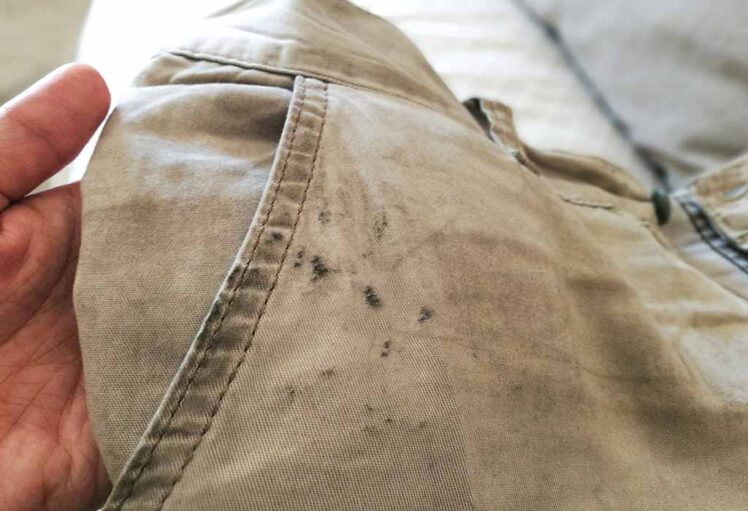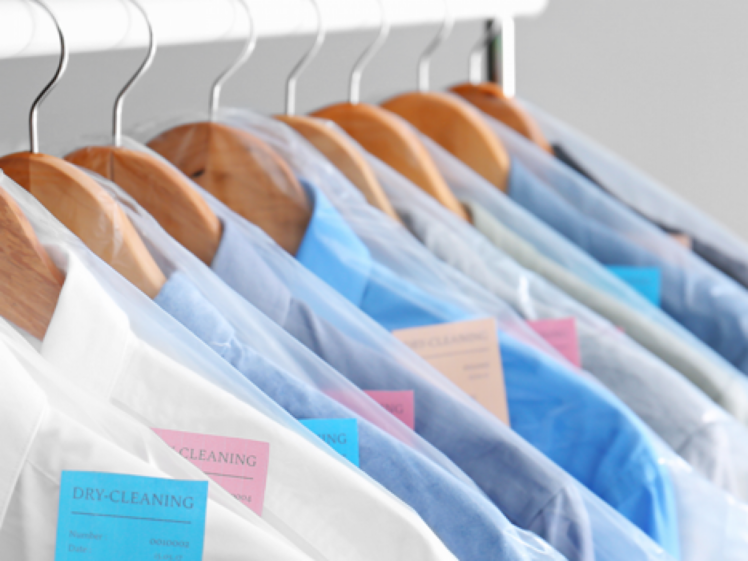Home › Others › Clothes
How Dry Cleaning Works: Everything You Need To Know
Published on:
Dry cleaning is seen as a go-to treatment for difficult stains that cannot be removed otherwise. However, the dry cleaning process also uses harsh chemicals that can weaken the fibres of the fabrics.
This means that you should be smart when opting for such services. If this seems like a good idea, then it’s time to learn more about dry cleaning and how it works. This will help you manage your clothes better and thus, make them last longer, which is always the ultimate goal. So for that reason, here are some helpful info bits about dry cleaning that will help you pick the best service and treat your clothes with care.

Contents
The chemicals are a must
If you believe in an all-natural approach, that’s great. After all, we should all strive to use fewer artificial ingredients in our day-to-day life. However, when it comes to dry cleaning, chemicals such as perchloroethylene also known as perc, are a must.
This one is extremely popular in the dry cleaning industry as it evaporates pretty fast, especially compared to traditional substances that are commonly used in a washing machine. Also, these chemicals make sure that dry cleaning won’t use water. That’s right, dry cleaning services don’t use water because commercial cleaner evaporates much faster.
There is a whole dry-cleaning process
If you ever wondered about the dry cleaning process, this is how it works. First, the process starts once you drop off your clothes. Then it gets tagged. Tagging means that clothes get identified (labelled) before it gets cleaned. Each garment needs to be counted and described, usually using various colourful paper tags. However, the process might differ from dry cleaner to dry cleaner.
After tagging, it’s time for pre-treatments. The pre-treating process will prep the clothes further for dry cleaning by inspecting for stains. Informing the cleaner about what caused stains can be helpful.
Then it’s time to do the dry cleaning. The clothes aren’t left dry during the process, instead, they get soaked in the water-free solvent. Then the clothes are placed in the perforated baskets, separately. They constantly get washed by the solvent that is sprayed on them.
Once that’s done, it’s time for the post spotting inspection. Since dry cleaning removes only oil-based stains, it’s crucial to check for other ones as well and treat them properly.
The last step is finishing, which includes steaming out the wrinkles by pressing out the garments. Also, it might include reattaching the previously removed buttons, as well as making other repairs to restore the garment to the best condition. Once you come to pick up your clothes, it’s very likely you’ll get them in a plastic bag. The bag is there to prevent additional stains during the transport. When you arrive home, make sure to remove the bags, in order to prevent damage due to moisture.

Costs vary from place to place
If you’re worried about pricing, then rest assured knowing that costs of dry cleaning vary from place to place. For example, the prices in America and Australia might differ due to many reasons. Therefore, it is crucial to look around your area or ask for recommendations from people you trust. That will give you a better insight for sure as you’ll know which places to avoid. The best dry-cleaning service in New Jersey, there are different factors that influence the price: type of chemicals used, type of service, and of course, the type of garments getting dry cleaned. If possible, find some discount coupons, because many places might give you a discount if you’re a first-time customer.
There are certain pros and cons to dry cleaning
Dry cleaning is useful and life-saving, no doubt about that. However, there are some pros and cons, and it’s up to you to decide which ones will prevail. The obvious pros of dry cleaning are convenience, expertise and preservation of the fabric during the process. You might add gentle cleaning and meticulous care to the list as well. On the other hand, there are cons as well. Those cons are pricing, solvents and the fact that dry-cleaning isn’t the most versatile method for stain removal. The general sentiment is that you should never overly rely on dry cleaning, and instead use it from time to time, when there’s a stubborn stain that won’t come out otherwise.

Some fabrics aren’t meant to be dry-cleaned
This information is important to emphasize. Garments made of cotton don’t require dry-cleaning, because most cotton garments are preshrunk. That means they can be dried in a machine. However, synthetic fabrics such as spandex, polyester and nylon are less likely to shrink when washed in cold water. Still, it’s important to use lower temperatures or to put them in a gentle spin. These materials tend to get wrinkled during the drying process and cause static electricity in the dryer.
It’s crucial to prep the clothes before taking them to a dry cleaner
This is hugely important because it saves time. The first step is to check the label to make sure that each garment is suitable for dry cleaning. Dry-cleaning employees don’t have time to do that (nor it’s their job), and the last thing you want is to get your clothes damaged during the dry-cleaning process. Also, assess each clothing item to make sure there aren’t any weak spots to prevent damage. Aside from that, check the dirty stains and mark them with paper or tape, so they can be easily found by a cleaner. Finally, don’t forget to check your pockets and eventually empty them. Dry cleaners tend to do that, but you can’t always count on them to do so, so it’s best to check by yourself.

Conclusion
These are important dry cleaning facts, and hopefully now you understand more about the process. As long as you treat your clothes with care, and follow the instructions provided in the text, you’ll have damage-free, clean garments to use every day.
Share With Your Friends

